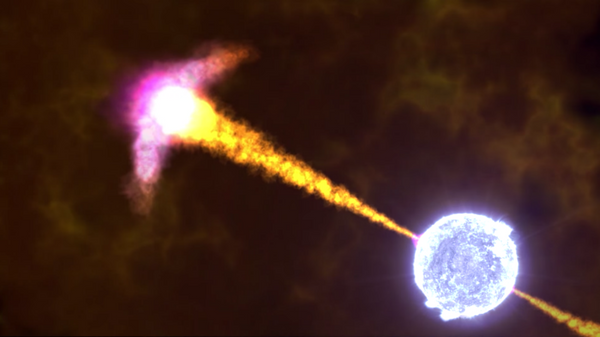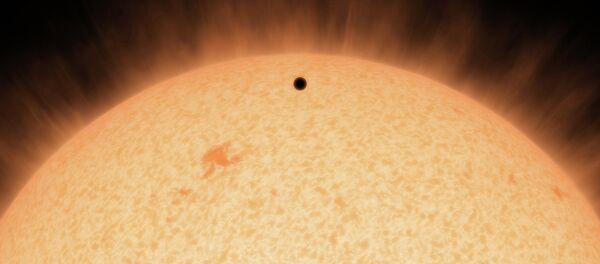The most luminous objects in the universe, gamma-ray bursts (GRBs) occur when massive stars slip into black holes. In a violent display, all of the star’s energy is emitted through incredibly focused beams on either end at close to the speed of light.
In a matter of seconds, a GRB releases as much energy as the Sun does over the course of its entire 10 billion-year existence.
Only discovered as recently as 1967, the bursts have only been observed in distant galaxies. But if one was to occur in the Milky Way and its beam was pointed toward Earth, the effects could be devastating, dousing the surface of the planet in enough radiation to wipeout even the most resistant organisms.
According to a US-Hungarian team of scientists, not one, not two, but nine of these have been discovered 7 billion light years from Earth. While that’s a perfectly safe distance as far as humanity is concerned, the discovery is raising some eyebrows.
The gamma-ray bursts are arranged in a 36° ring that appears to be over 5 billion light years across. For comparison purposes, the Milky Way galaxy has a diameter of 100,000 light years, and the largest known galaxy has a diameter of only 6 million light years.

In fact, everything we know about physics suggests that the largest structure which could possibly exist in the universe is 1.2 billion light years.
"If we are right, this structure contradicts the current models of the universe," Professor Lajos Balazs, of Konkoly Observatory in Budapest, said in the report. "It was a huge surprise to find something this big – and we still don’t quite understand how it came to exist at all."
There’s always the possibility that the GRBs are not bound together by any common gravitational force, but are entirely separate objects which only coincidentally form a ring. But according to Balazs, the chances of such a random occurrence are only 1 in 20,000.
"If the ring represents a real spatial structure, then it has to be seen nearly face-on because of the small variations of GRB distances around the object’s centre," Balazs says.
That refers to the fact that GRBs can only be observed by planets almost directly facing the beam. Any variation makes the gamma-ray burst virtually invisible.
"The ring could though instead be a projection of a sphere, where the GRBs all occurred within a 250 million year period, a short timescale compared with the age of the universe."
Still, even if the structure is a spheroidal ring projection, the void within is at least ten times larger than any known void.
The scientists’ paper has been published in Monthly Notices of the Royal Astronomical Society.


